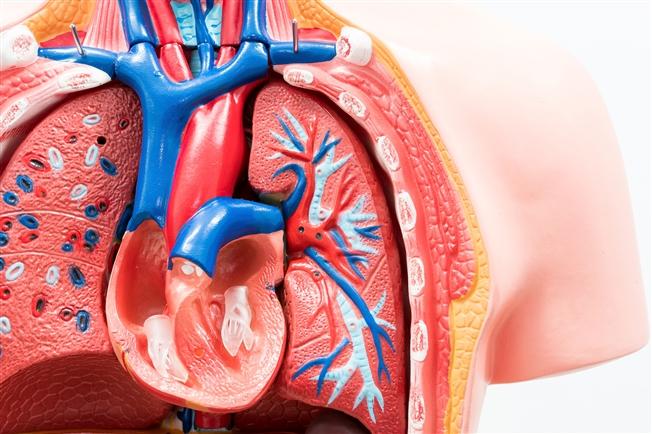SAVR vs. TAVR: Comparing the latest aortic valve replacement options

By the time you reach age 75, your heart has thumped a whopping 2.75 billion beats. It’s no wonder that by the same age or older, one in eight people has moderate or severe aortic stenosis (AS)1, a condition in which the aortic valves of the heart become calcified and rigid, making it difficult for the heart to pump blood effectively. This can lead to symptoms such as dizziness, feeling faint, and angina (chest pain), not to mention it places a tremendous burden on the heart and greatly increases the risk of heart failure. Aortic valve repair surgery or aortic valve replacement is often indicated for these patients. It is then up to the doctor and patient to determine whether open-chest surgical aortic valve replacement (SAVR) or minimally invasive transcatheter aortic valve replacement (TAVR) is the better option, taking into consideration a wide range of factors, including the patient’s own preferences.
The difference between SAVR and TAVR
Surgical aortic valve replacement (SAVR) is traditional, open-chest surgery, which has been practiced for more than 50 years to replace damaged or diseased aortic valves. SAVR is generally indicated for asymptomatic patients (having no symptoms of AS) who are at low risk for open-chest surgery, meaning the patient is well and strong enough to undergo this type of surgery and recovery. This surgery is now possible using a minimally invasive approach, which lessens the impact of these procedures.
Transcatheter aortic valve replacement (TAVR) is the less invasive nonsurgical option. It is performed by way of a catheter inserted into the leg, which then allows the replacement valve to be guided up to the aortic valve without opening the chest or heart. Patients might be candidates for TAVR if they have AS symptoms and are at intermediate or high risk of having open-chest surgery, meaning they are more vulnerable to complications and a longer, potentially more difficult recovery from the surgical approach. These patients are usually older. Frailty is also considered in the decision-making process. TAVR may also be recommended for patients who have had a SAVR in the past and now need that valve replaced. TAVR is also generally reserved for patients who have a life expectancy of more than one year.
While these general eligibility factors matter when it comes to deciding SAVR or TAVR, there are many other considerations and patient-specific factors that help determine which procedure might be best for the patient.
SAVR and TAVR considerations
There are risks associated with both SAVR and TAVR. For example, studies show that TAVR patients may be more prone to vascular complications and paravalvular regurgitation2. Paravalvular regurgitation is a result of “abnormal communication” between the prosthetic (replacement) TAVR valve and your heart tissue, which can result in irregular blood flow. Regurgitation that is more than mild, however, is rare and has little impact on outcomes. After TAVR, patients are also slightly more likely to need a permanent pacemaker implant, which in itself poses greater risk, including more time in the hospital and ICU, and increased odds of mortality3. This occurs mainly in patients with pre-existing abnormalities with the electrical system of the heart.
In clinical trials, patients who underwent SAVR were found to be more at risk for blood transfusion, acute kidney injury, and new onset of atrial fibrillation (AFib).4
While both SAVR and TAVR carry individual risks, risk alone is not the only reason to choose one over the other. The following factors also come into play when deciding whether to choose SAVR or TAVR:
- Anatomical considerations – To help decide which aortic valve replacement surgery is best for you, your medical team will consider the size of your aortic valve and blood vessels. If you have a condition such as “porcelain heart” (heavy calcification), prior cardiac surgery or radiation therapy to the chest, TAVR may be the better option. The technical aspects of surgery, such as the size of the aortic annulus (the opening where the aortic valve is attached), all play an important part in the decision-making process.
- Type of AS or aortic disease – The type of aortic stenosis or aortic disease you have may also influence your cardiology team’s recommendations. If you have other issues, such as coronary artery disease, multi-valve disease, bicuspid valves (two vs. the usual three aortic valve leaflets), SAVR may be the more appropriate option.
- Comorbidities: Having other conditions or diseases greatly influences your ability to withstand and recover from surgery. Your heart team will consider, for example, whether you have diabetes, lung disease, or a history of heart attack. SAVR, with its longer and possibly more demanding recovery time, may not be a good fit for someone who is already in a weakened state or has a compromised immune system.
- Stroke risk – SAVR and TAVR have equivalent risk of stroke. The overall risk related to the valve procedure is low in both groups.
- Valve comparison – There are two types of valves used for valve replacement: mechanical valves and prosthetic valves. Mechanical valves are “artificial” valves that have been used in SAVR surgeries for half a century. They are reliable and do not wear out easily, but they do carry a greater risk for bleeding due to the requirement for long-term anticoagulation (blood-thinning) with warfarin. Bioprosthetic valves, used for TAVR and tissue SAVR, are made from pig or cow tissue and carry less risk of bleeding and require less long-term use of blood thinners. Bioprosthetics may last 10 to 15 years after implantation. Because TAVR is a newer procedure, we know less about long-term durability of these bioprosthetics. If the valve wears out, the patient may be treated with a TAVR. This is called the valve-in-valve procedure. The decision on the type of valve is based on age, lifestyle, and the ability to be on long-term anticoagulation with warfarin.
- Frailty – While age alone doesn’t determine which procedure is best, age along with certain capacities, such as the time it takes to walk 15 feet, or how strong one can grip, matters. Patients are also evaluated using the Katz Index of Independence in Activities of Daily Living. This is an assessment of how well and independently a patient is able to function in daily life, such as ability to use the bathroom, feeding oneself, transferring (from bed to standing to chair and so forth), getting dressed and bathing. With each activity done independently or dependently, the patient receives a score. The collective evaluation tells the medical team how well or poorly a person is able to function on their own and whether SAVR or TAVR is the appropriate choice for them.
- Other cardiac issues – Patients who have cardiac conditions that require surgical correction, such as coronary artery disease, mitral valve disease or ascending aortic aneurysm, may best be treated with SAVR and combined surgical operation that fixes all issues during the same operation. Alternatively, coronary disease may be treated with stents prior to TAVR and some mitral valve issues can be treated via a transcatheter approach.
Ultimately, your heart team, which consists of you, your cardiologist and two cardiac surgeons, will explore all the benefits and risks, advantages and disadvantages of each type of aortic valve replacement while taking into consideration your age and health and the variety of factors mentioned.
At Lankenau Heart Institute our heart team is able to provide the best option for the treatment of aortic stenosis. Our patients benefit from the well-known excellent care they receive in Main Line Health hospitals. With appropriate recommendation of TAVR and using a minimally invasive technique for SAVR, the patient can be confident in an excellent result without the additional burden of traditional open aortic valve replacement.
Lankenau Heart Institute, part of Main Line Health, serves patients at hospitals and health centers throughout the western suburbs of Philadelphia. To schedule an appointment with a Lankenau Heart Institute specialist, call 1.866.CALL.MLH (225.5654).
1Nkomo VT, Gardin JM, Skelton TN, et al. Burden of valvular heart diseases: a population-based study. Lancet 2006;368:1005-11.
2Stamatios, L, Salim, SH, Douglas, PS. Paravalvular aortic leak after transcatheter aortic valve replacement. Circ. 2013;127:397-407.
3 Opeyemi, O. Fadahunsi, AO, Anene, U, et al. Incidence, predictors, and outcomes of permanent pacemaker implantation following transcatheter aortic valve replacement. JACC: Cardiovasc Interv. 2016;9(21)2189-2199.
4 Reed AS, Agoritsas, T, Manja, V, et al. Transcatheter versus surgical aortic valve replacement in patients with severe aortic stenosis at low and intermediate risk: systematic review and meta-analysis. BMJ. 2016;354:i5130.
 Content you want, delivered to your inbox
Content you want, delivered to your inbox
Want to get the latest health and wellness articles delivered right to your inbox?
Subscribe to the Well Ahead Newsletter.
